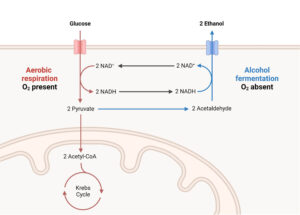types of fermenter
Fermenters come in a variety of sizes, shapes, and materials. The most common fermenter design is the stirred upright cylinder. They can range in volume from a few liters up to several thousand liters. Other popular types include the bubble up fermenter, tower fermenter, and airlift fermenter.
Airlift fermenters feature a gas light-baffled riser tube and a down-comer tube. An air/gas mixture is introduced into the base of the riser tube via a sparger. The difference between the densities of the aerated medium in the riser tube and down-flow tube drives the circulation of the broth.
Another type is the column fermenters. This design is very simple. It is comprised of a glass or plastic column. It may be vertical or horizontal. It is usually filled with a liquid, and air is supplied from the bottom. Down-flow tower fermenters are useful for continuous cultures of E. coli, S. cerevisia (baker yeast), or activated sludge.

Fine bubble aerators do not require mechanical agitation. These require less energy to operate, but they require additional parts such as baffles and stirrer glands. Small fermenters typically have four baffles, while larger ones might have up to six or eight.
How many types of fermenter are there?
Alternatively, there are solid-substrate fermenters. These are the most basic form of fermenters and can be constructed from wood, plastic, or metal. Typically, the substrate is perforated in the bottom, and a spout allows for aeration. They are often used for traditional fermentations such as kofi fermentation. These fermenters are labor-intensive to run, however, and require a large operational area. Also, they require sterilizing the substrate.
The most common types of fermenters are glass or metal towers. Tower fermenters consist of tubes made of glass or metal that are connected to each other. In addition, a central air inlet helps maintain aseptic conditions. The fermenter can be thermostatically controlled or use a heating jacket. Tower fermenters are also available as multistage fermenter systems.
Fermentation is a natural process in which living organisms release energy through a chemical reaction. The process is a key element in many production processes. Yeasts are important for making bread, yogurt, and biofuels. These organisms are also responsible for the production of alcohol.
The simplest tower fermenter is called a bubble column fermenter. It is composed of an elongated non-mechanically stirred tube with an air sparged base. The aspect ratio is approximately 6:1. It was originally used for the production of citric acid. However, the technology behind fermenters has changed remarkably since the 1960s.
Whether you make your own beer or buy an already fermented beer, choosing the correct vessel is crucial for the process. Different kinds of fermenters will affect the amount of time the beer takes to ferment. They will also affect the flavor of the finished product.
Fermenters are generally enclosed with a jacket and a sparger. They also feature an agitator shaft, which is connected to a motor at the bottom. Fermenters also feature sensors for temperature, dissolved oxygen, and pH. Most modern fermenters are also fitted with computers to monitor data.
Fermenters are commonly made from stainless steel. However, you can find glass fermenters as well. Stainless steel fermenters contain a minimum of four percent chromium, which gives them a superior corrosion resistance. Glass fermenters are suitable for small-scale production. If you are making beer, wine, or other fermented foods, you may want to use glass vessels.